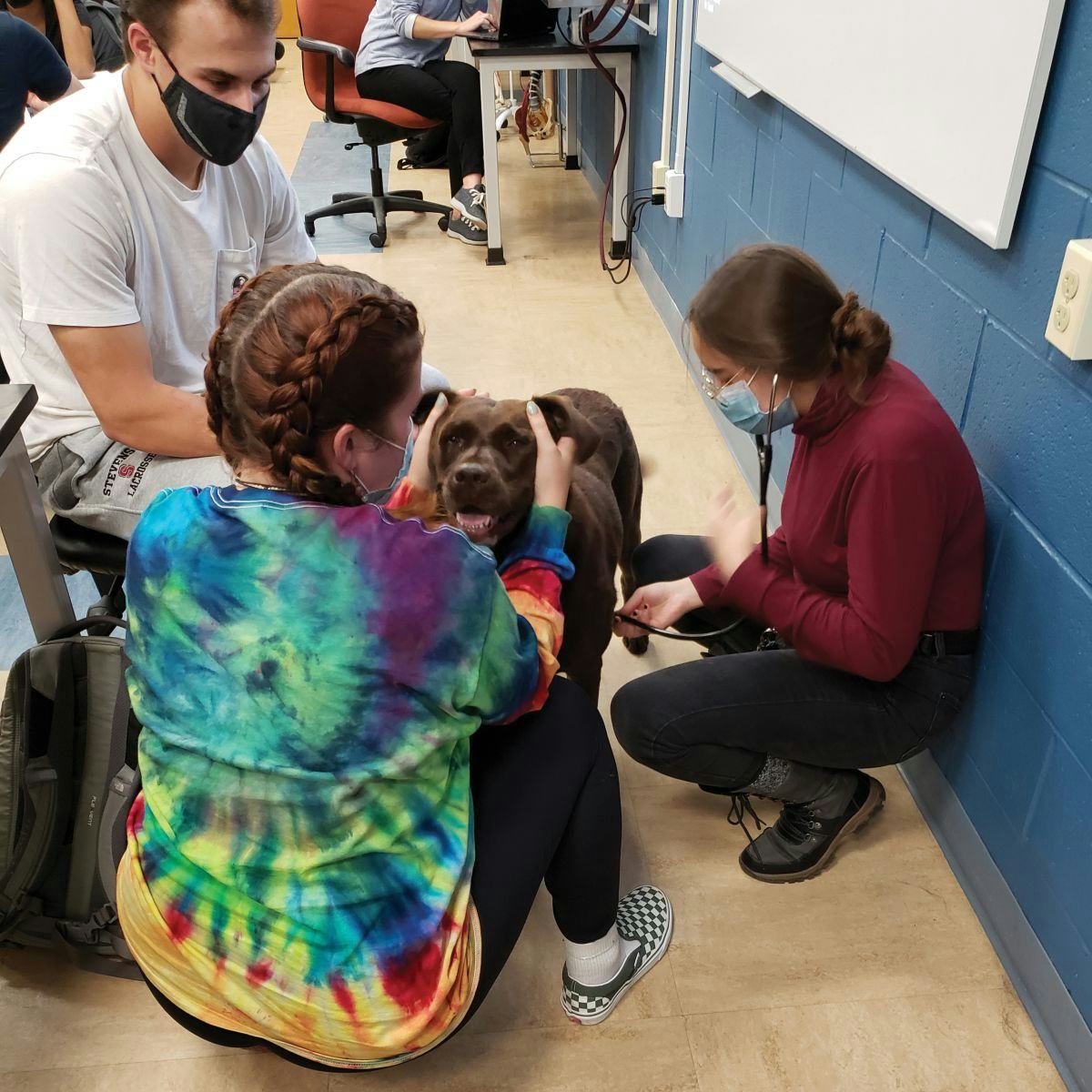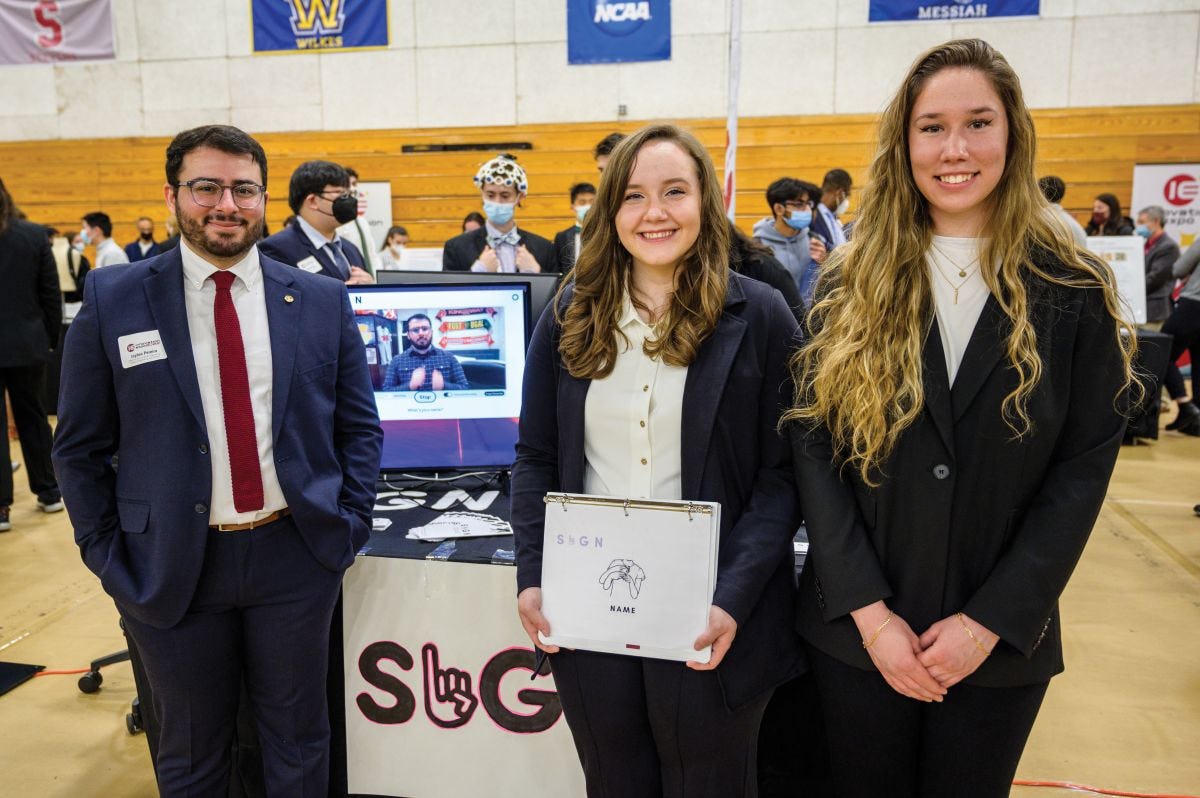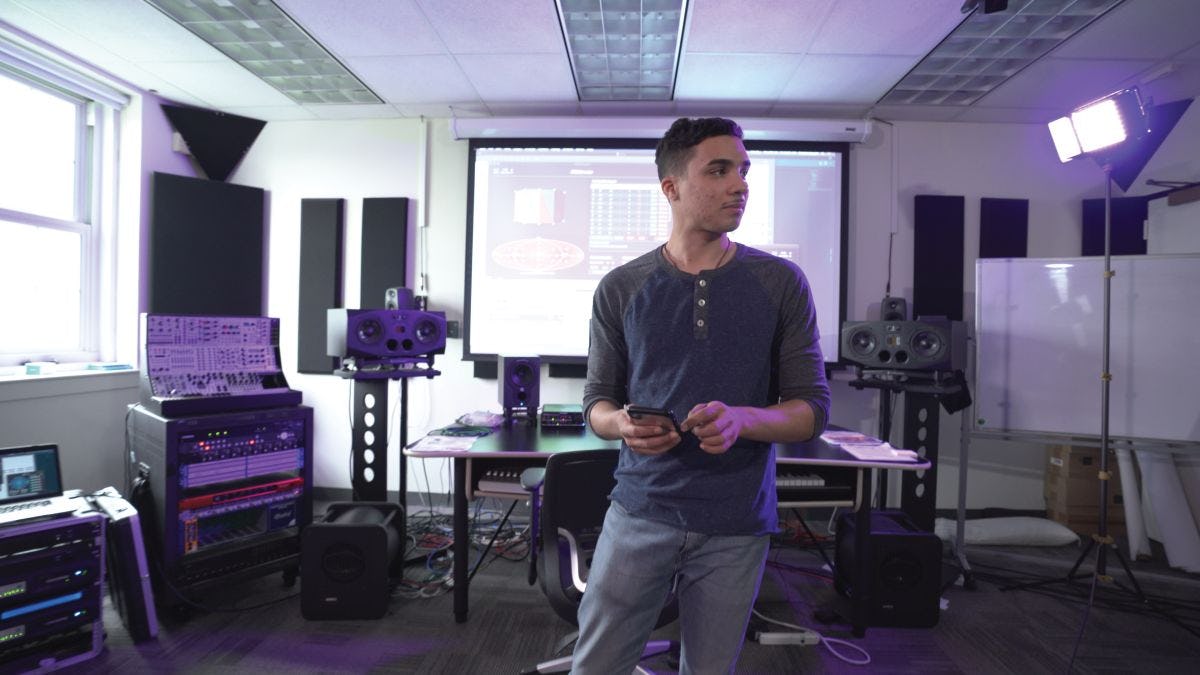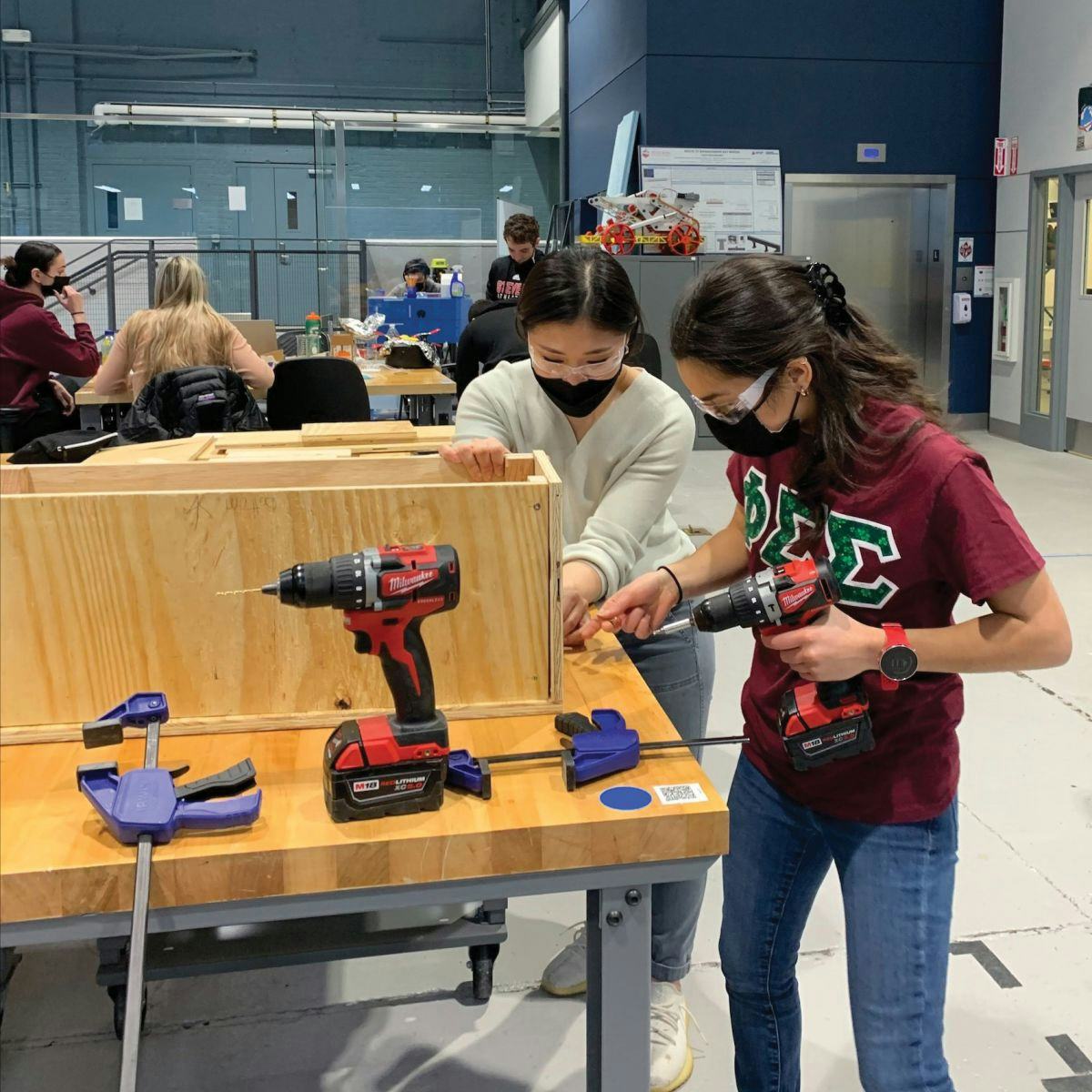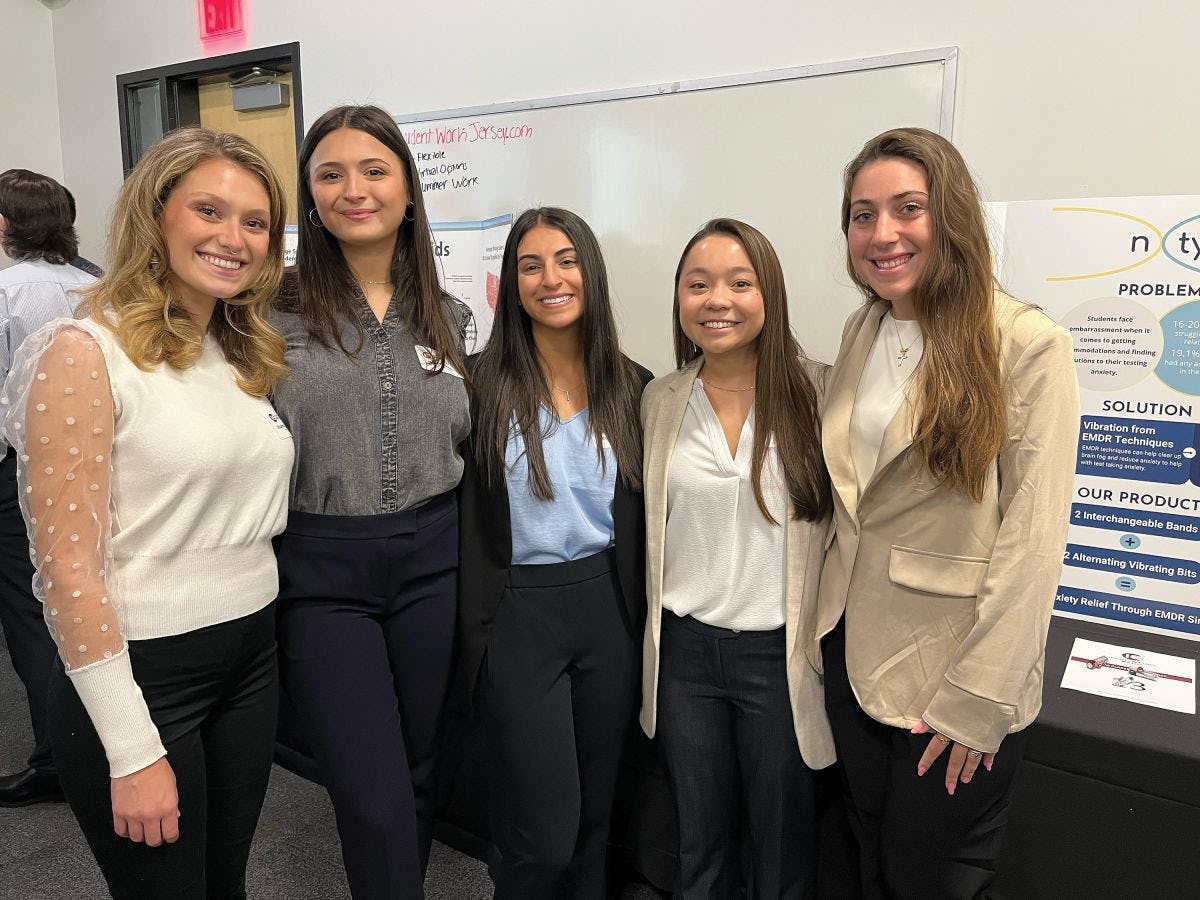Snapshots From The 2022 Innovation Expo
Stevens’ eagerly awaited annual day-long student showcase took place this past April, returning to full in-person attendance for the first time since 2019. Nearly 200 senior design teams and individual students presented bold new ideas, innovations, products and services — from better care for Fido to useful intel for small farmers. Here’s a sampling.
Monitoring Animal Health
Animals get sick and tired, but sometimes it’s hard for us to tell they’re suffering. That’s why two teams of Stevens biomedical engineering students designed technology that can better enable us to monitor their health.
Sadie Clark, Henry Johnson and Aleese Mukhamedjanova developed a wearable monitor to quickly alert veterinarians when an animal is in danger. It works by listening to heart and lung sounds, then converting them into a digital signal that’s processed to calculate heart and respiratory rates. Another team of Michael Blas, Salvatore DiMaggio, Ashleigh Nagy and Amber Porrett prototyped technology that can sound an alarm when military working dogs are feeling excessive heat, stress or other health strains.
What’s next: Professor Vikki Hazelwood, who advised both teams, says it’s possible next year’s class of seniors could take up one or both of the projects and continue development.
Translating American Sign Language
American Sign Language (ASL) is practiced by an estimated 1 million people in the U.S. alone, and 35 million Americans report some difficulty hearing or speaking. Yet ASL can be challenging to understand for those who have never learned it.
A three-member student team — Brianna Garland, Jayden Pereira and Chloe Sharp — worked with Stevens entrepreneur-in-residence Mukund Iyengar to design the first real-time system that captures ASL users’ hand-signing motions and translates them into text instantly without special equipment such as hand-tracking gloves or 3D cameras. The project took top prize in Stevens’ 2022 Ansary Entrepreneurship Competition.
What’s next: The team eventually hopes to make its software publicly available, free of charge.
Watch this video to learn more.
Personalized Music-And-Light Shows
Working with Stevens professor (and composer) Lainie Fefferman, College of Arts and Letters senior Randy Zoquier created an immersive audio-visual experience he calls Silva. The experience consists of two distinct rainforest and oceanside environments using an array of speakers and lights. Visitors personalize the show, using smartphones — and their companions can tap into the same experience with their own devices.
What’s next: Zoquier has no immediate plans to mount the work elsewhere — but he does hope to exhibit it again at some point.
Check out this video to see Silva in action.
AI for Small Farmers
Big Produce has plenty of tools and IT to monitor and battle weather, pests, supplies and other challenges. Now a five-member Stevens team (William Baltus, Julia Chung, Jon Cucci, Justis DiBattista and Grace Miguel) wants to bring computing power and AI to small farmers and home gardeners, too. Their networked system of sensors and software, known as IntelliVeggie, puts major-league analytics and a specially prefabricated greenhouse in the hands of smaller growers — at a fraction of the cost.
What’s next: As some team members begin graduate school and some enter the world of work, the group continues seeking capital to develop the system further.
Read more about the team and IntelliVeggie.
The Stress-Reducer on Your Wrist
Anxiety can be debilitating, particularly in high-stress situations such as taking exams, flying on airplanes or preparing for public speaking. Five women in Stevens’ School of Business — Mia Bertuzzelli, Nina Caldarone, Shannon Giarratana, Gianna Nitti and Sara Persau — designed nxty, a wearable solution. An unobtrusive pair of wristbands vibrate mildly, providing EMDR (Eye Movement Desensitization and Reprocessing) sensory stimulation, an emerging technique that has been demonstrated to reduce stress.
What’s next: Team members are all moving on to new careers and graduate studies, but Giarratana says the group will continue working toward patent protection as a next step toward potential future development and commercialization of the product.
Read more coverage of the 2022 Innovation Expo.
— Paul Karr


